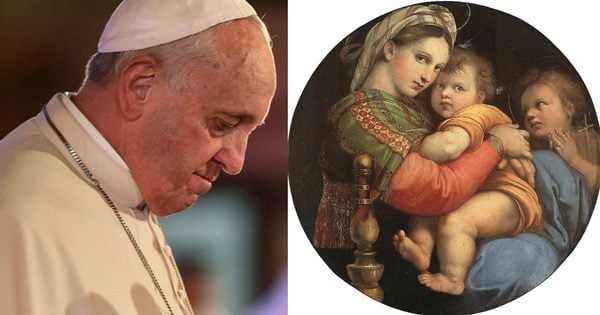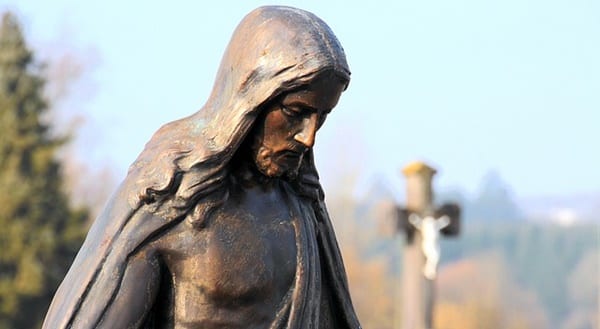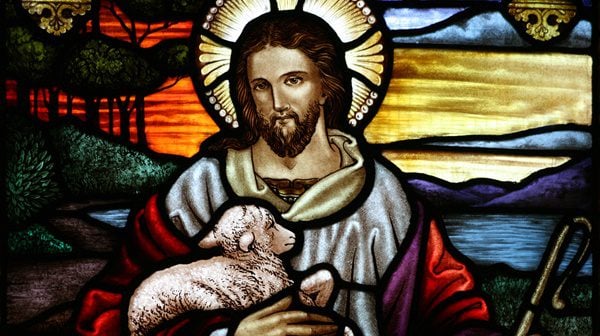In the wake of the devasting report from the Pittsburg Grand Jury documenting the abuse of 1,000 children by 300 priests in Pennsylvania over seven decades, Pope Francis released a letter on August 20. In it he called the entire Church to repentance for the sins of the past and conversion from a “culture of death” which caused “heart-wrenching pain of these victims, which cries out to heaven”. The Holy Father wrote, “Looking ahead to the future, no effort must be spared to create a culture able to prevent such situations from happening.” Rightly, as he concludes the letter, Pope Francis turns our gaze toward Mary as the best guide for creating a culture of life. “She, the first of the disciples, teaches all of us as disciples how we are to halt before the sufferings of the innocent, without excuses or cowardice. To look to Mary is to discover the model of a true follower of Christ.”
Following Mary
I can think of no better role model for what it looks like in practice to be a disciple of Mary than that provided by the great Italian educator, Dr. Maria Montessori (1870—1952). Today she is known around the world as the author of a method of education for young children. But she insisted throughout her lifetime that she was not the author of a method of education, but rather that in 1907 she had discovered a way to “help children to live”. For her that meant liberating children from what she saw as abusive child-rearing practices dominated by now discredited ideas such as “children should be seen and not heard” and “spare the rod, spoil the child”. She called on all adults to stop silencing and punishing children for being children and instead to create home and learning environments that catered to the unique spiritual and psychological needs of childhood. As a pointed reminder that to succeed in this we must imitate Mary, Montessori wanted the image of Madonna and child by Rafael (known in Italian as Madonna della Seggiola, “Madonna in chair”) to adorn all Montessori classrooms.
Many of us raised in the Catholic faith have devoted some imaginative space to pondering what type of mother Mary was. I, for one, cannot imagine her silencing her Son. Scripture recalls that she was upset not that boy Jesus was teaching in the Temple, but that she did not know where he was. And it is even harder to imagine her inflicting physical harm on Jesus no matter his transgression. The boy who grew up to be a man who gave his life to demonstrate the centrality of mercy and love to his heavenly Father, must have been schooled in those virtues by his earthly parents as well.
Montessori would agree. In imitation of Mary, she called parents and teachers to practice what she called “universal motherhood”, a practice not limited by gender or even by the act of giving birth. Montessori believed that not only parents and teachers but also the unmarried and the celibate, whether male or female, gay or straight, clergy or lay, were all called to fulfill God’s command to care for the least and the last among us. Pope Francis issued his own pointed reminder in his letter when he called our attention to Matthew 18. There Jesus’ harshest reprimands are directed at the disciples who, in the throes of rivalry, risk putting a stumbling block in the way of children. “Take care,” Jesus warns, “that you do not despise one of these little ones” for it is “not the will of your Father in heaven that one of these little ones be lost.” To the Church’s shame as Francis put it, “We showed no care for the little ones; we abandoned them.”
Practicing Universal Motherhood
Such a failure on the part of the Church is all the more tragic given the Church’s embrace of Dr. Montessori’s reforms a century ago. In 1910, Pope Pius X, who promoted communion for children, encouraged Dr. Montessori to create materials to help the child understand the mystery of the Mass. By 1910 she had developed such a curriculum, known as the Atrium. And before his death in 1922, Pope Benedict XV was so impressed by his conversation and correspondence with Dr. Montessori that he had her books placed in the Vatican library.
Pope Francis has called the entire church to repent of the hunger for power and privilege that led so many to despise the little ones and sacrifice them to their fears. As we strive to answer that call, we would be well served by recovering the tremendous resource provided by Dr. Montessori. Her work allows us to see that the ongoing clerical abuse of children is the result of the failure of men to practice universal motherhood. Before God became flesh, a mother was chosen. Which is why the church has always understood that motherhood is a sacred calling, a divine responsibility if God is to have any chance of being present in the human experience.
A practical way for the Church to leave behind the culture of death that has so enthralled it would be to require Montessori to be taught in seminaries. In fact, all clergy, present and future, should be required to read Maria Montessori’s original writings, especially The Secret of Childhood and her gem, The Child in the Church. Clergy should be trained in the Catechesis of the Good Shepherd and become adept at “following the child”, the essential practice for all Montessori educators. Dr. Montessori believed to be a follower of Christ one must be free of shame at being a follower. That shame, manifested as a thirst for power and privilege, is the sin that causes us all to stumble. Children are unabashed followers, openly imitating adult models. To follow children is to learn from them how to be joyful followers, like the ninety-nine sheep who wait patiently in the sheepfold for the return of the Shepherd. When we wander off, the Good Shepherd will come to find us. Perhaps he searches for each lost child because he learned well from Mary how to be a very good mother.
Images: Pope Francis, Wikimedia, Public Domain. Raphael’s Madonna della Seggiola, Wikimedia, Public Domain.












